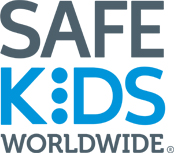You are here
Kids In Autonomous Vehicles Recommendations
Recommendations for the Blue Ribbon Panel on
Children in Autonomous Vehicles
At this first meeting of the Blue Ribbon Panel on Children in Autonomous Vehicles, panelists discussed an array of possible recommendations. This report distills those discussions into the top priorities and opportunities for immediate actions. As the field and technology evolves, so too will the recommendations for action.
Our call to action outlines the five key actions described earlier that we believe are necessary at this stage of development and testing. In addition to these actions, the panel has identified the following eight recommendations.
Regulation, Legislation & Policy
In anticipation of new features that may change the current orientation of vehicle seating, restraints and other safety mechanisms, child-focused recommendations will be shared with developers, legislators, and regulators. Initial recommendations:
1. For law enforcement and education purposes, develop a universal definition of “driver” or caregiver for vehicles transporting children through age 12, including those with physical and/or cognitive impairment, specifically articulating responsibility for the child occupant’s safety in a driverless vehicle.
2. Evaluate how autonomous vehicle occupants will be identified by seating position on uniform traffic citations as the interior cabin changes.
3. Develop an approach for what elements are included in the national crash reporting databases as the field evolves.
4. Develop model legislation provisions and best practice language for states that maintain strict, universally- applicable child passenger safety standards that ensure children of all ages are protected.
Education & Outreach
While it is still too early to develop a public education and communications campaign about AVs that are not yet widely available, child safety advocates and transportation experts, in collaboration with industry partners, should identify communication needs of relevant stakeholders (e.g., parents, public health and safety practitioners) and develop evidence-based best practices and guidance to meet those needs. Initial recommendations:
5. Convene a multi-year consortium of child safety advocates and transportation experts, along with industry partners that monitors research and progress and generates ongoing policy statements and advocacy guidance that reflects an evolving field.
6. Develop and use consistent language and messaging with the public that reflect the technology transition from advanced driver assistance systems to autonomous vehicles. Currently, many features in newer vehicles (such as park assist and lane departure) are precursors to full autonomy.
7. Develop and implement education for certified child passenger safety technicians on the features and safety issues relevant to autonomous vehicles (beginning with current advanced driver assistance system features). Prioritize education in cities and states where autonomous vehicles are being tested.
8. Develop and implement education for first responders and law enforcement officers on the features and safety issues relevant to autonomous vehicles and child occupant restraints. Prioritize those who are also certified child passenger safety technicians and those who work in cities and states where autonomous vehicles are being tested.
